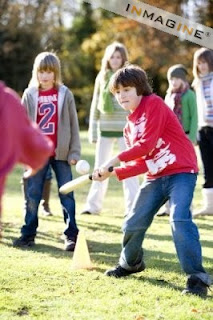 In the current entry it will be discussed a little bit about the learning style and a relationship with the multiple intelligences already disscused.
In the current entry it will be discussed a little bit about the learning style and a relationship with the multiple intelligences already disscused.first of all, a definition of the three main learning styles will be stablished:
Visual Learners
learn through seeing
These learners need to see the teacher's body language and facial expression to fully understand the content of a lesson. They tend to prefer sitting at the front of the classroom to avoid visual obstructions.
These learners need to see the teacher's body language and facial expression to fully understand the content of a lesson. They tend to prefer sitting at the front of the classroom to avoid visual obstructions.
Auditory Learners
learn through listening
They learn through verbal lectures, discussions, talking things through and listening to what others have to say. Auditory learners interpret the underlying meanings of speech through listening to tone of voice, pitch, speed and other gestures.
learn through listening
They learn through verbal lectures, discussions, talking things through and listening to what others have to say. Auditory learners interpret the underlying meanings of speech through listening to tone of voice, pitch, speed and other gestures.
Kinesthetic Learners
learn through , moving, doing and touching
Tactile/Kinesthetic persons learn best through a hands-on approach, actively exploring the physical world around them. They may find it hard to sit still for long periods and may become distracted by their need for activity and exploration.
So far, it is understood that human beings have particular ways to aquire new information or knowledge depending of enviromental or situational context .
Tactile/Kinesthetic persons learn best through a hands-on approach, actively exploring the physical world around them. They may find it hard to sit still for long periods and may become distracted by their need for activity and exploration.
So far, it is understood that human beings have particular ways to aquire new information or knowledge depending of enviromental or situational context .

So it can be clasified every multiple intelligence in these three learning styles for designing easier taking into account the Gardner's multiple intelligences. So we might say that the visual learners are those who explode more the Visual/spatial intelligence, and why not the interpersonal intelligence. In the Auditory learners we would have the linguistic intelligence, the mathematic intelligence and also the intrapersonal intelligence. finally, it is the kinesthetic learners where it might be include the body/kinesthetic intelligence, and the musical.
with this clasification it is posible to design looking at the best way to present a new knowledge to your students taking as a reference what posible skills they have. This clasification is not necessarily restrictive because human brain sometimes acts in different way by mixing all its skills to learn something. So, after stablishing this theoritical clasification it may be proposed an activity but don't forgeting some important tips; as we said in the last entry of this blog, it is good to observe the interaction in the classroom before taking decisions, the way the students socialize and behave with others classmates will guid the way an activity will develop, for example if you see that the level of interaction among them is not quite closer group activities should be avoid, but what to do if the most part of the student present like for example the kinesthetic skill individually? Well in that case is when learning skill and the intelligences must be mixed, for example if what we mentioned happen a simple solution may be to combine a musical activity outdoors with certains particularities in the song or the rythim to help them to interact without push them to socialize.



No hay comentarios:
Publicar un comentario